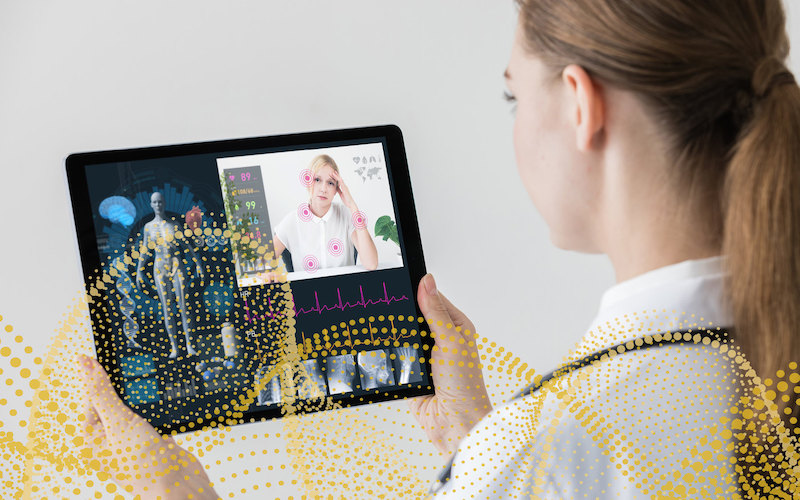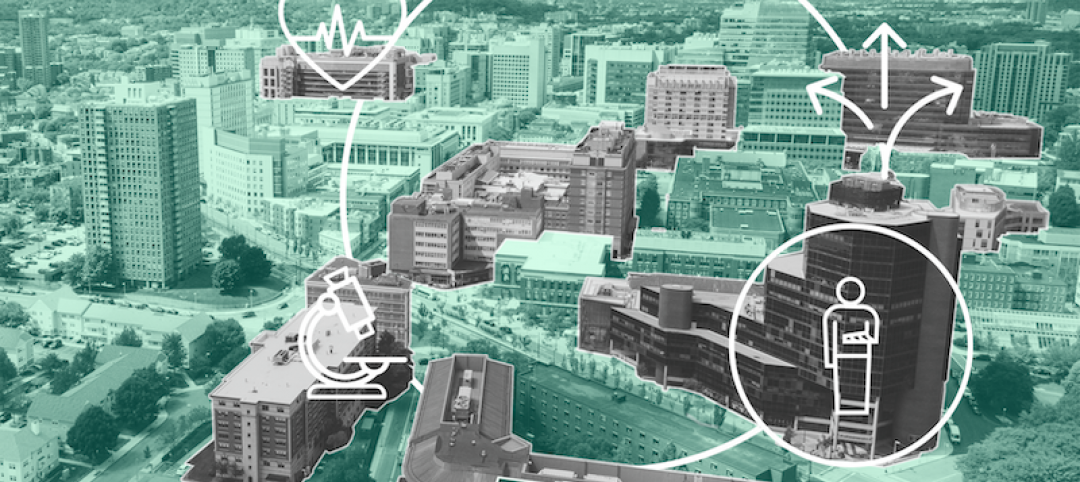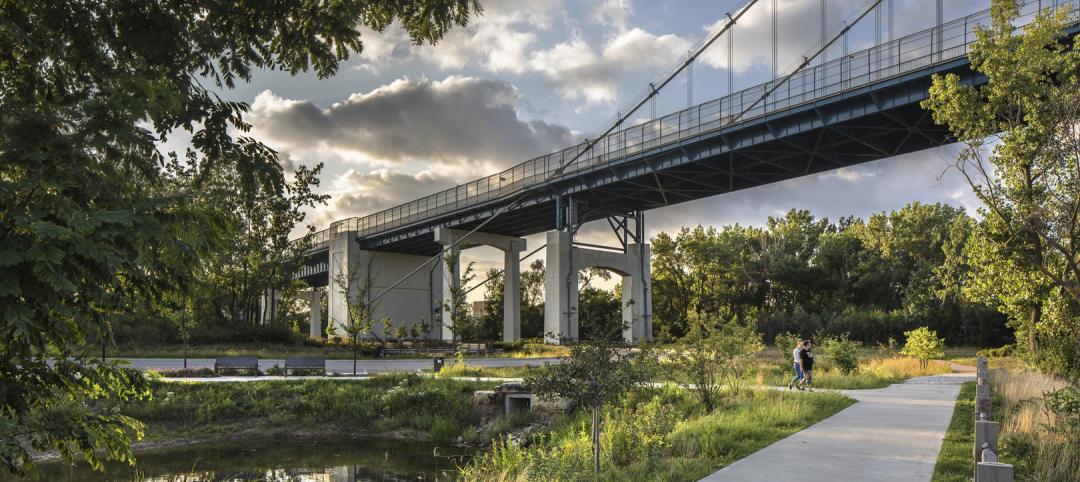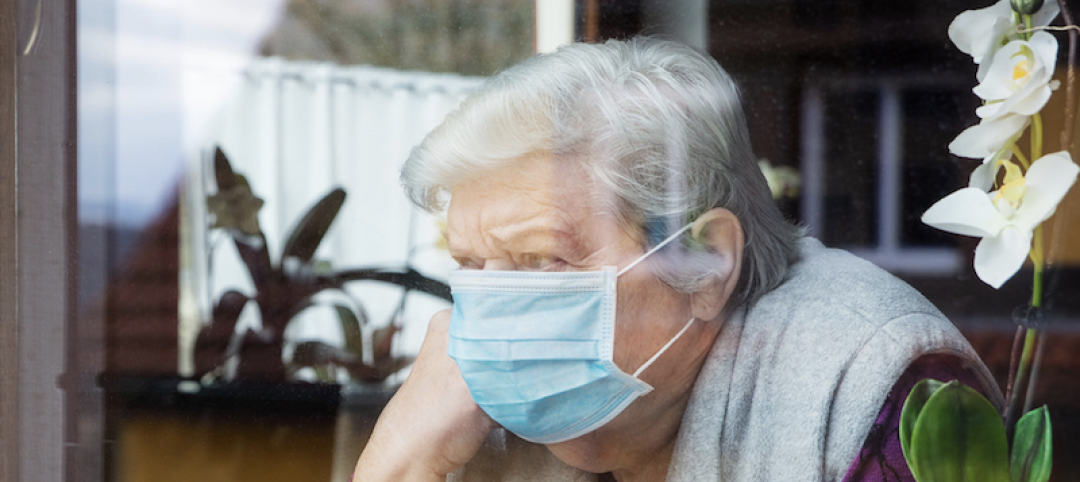"In the last couple of years, the impacts of climate change are increasingly viewed as a global crisis, and I believe the next decade will be defined by our response to this emergency," says San Diego-based architectural designer Annie Chiang. The impacts of this ongoing crisis will continue to stress our infrastructure of essential buildings and systems. "Healthcare organizations will look to the design and construction industry to create and deliver high-performing, resilient hospitals on tight budgets," predicts Jessica Miller, a mechanical engineer in the Boston office. National standards including Facility Guidelines Institute (FGI) and American Society of Heating, Refrigerating and Air-Conditioning Engineers (ASHRAE), as well as state and local regulations, like the new California Building Code, will continue to challenge hospitals to become more energy efficient.
Disasters and extreme weather will continue to expose the failure of buildings to adapt to our changing environment. "We will analyze and anticipate the specific risks posed in each locality, looking beyond historical data to predict future impacts, and design for the demands those threats create on the building systems of healthcare spaces," says Tyler Krehlik, an architect in San Francisco.
Healthcare environments will be designed with ever-greater flexibility to allow them to quickly adapt to the roller-coaster of impacts caused by the climate emergency—whether it be spikes in emergency care following extreme weather incidents, or care for lingering stressors like poor air quality or inadequate food supply. Designing for redundancy in building operations and critical patient services will be a minimum standard to ensure hospitals and clinics can provide uninterrupted care after a catastrophe.
Making Health More Equitable
Access to health and wellness services is a vital part of any conversation about community resilience, leading to a future where a hospital becomes an anchor within its community and personal health care is just one of many services offered to citizens. "Health systems will seek to enhance holistic wellbeing in the community, making investments beyond required healthcare benefits like supporting increases in public greenspaces or trails, or creating programs in high schools to prepare students for future careers in healthcare," says Johnny Wong, an architect in San Francisco.
Health systems will use the power of big data, collected responsibly in a non-biased manner, to shape healthy behaviors and lifestyles in their communities, identifying particularly at-risk populations as well as needs and priorities in the local population. This will help organizations pinpoint and provide culturally-sensitive care across a variety of diverse communities, lend a more holistic view for providers of patients’ lives and needs, and change care practices to be inclusive.
Design professionals will benefit from this shift, moving away from being observers of communities to engaging communities in creating solutions together. Further, designers will think beyond project boundaries adopting non-traditional roles and methodologies to focus on population-health models as the ideal future state of health delivery, rather than the more common fee-for-service or value-based care. "Design can help drive a future of building healthier communities where equitable access to care helps everyone to thrive," predicts Chicago architect Karthik Ramadurai.
Considering the Consumer
For some time healthcare providers have predicted that the 'consumerism' phenomenon would transform their industry. While there have been mixed results to-date in the shift to a consumer-driven model, we expect this trend to gain momentum in the next decade as providers are further challenged by comparisons to other industries where the consumer is in control of their experience.
Patients will continue to be influenced by the ease of online shopping, voice assistants and mobile banking, thus shaping expectations of how they should be able to schedule appointments, communicate with their caregivers and order medications. Health practice director Wayne Barger suggests that "to achieve a more customer-focused experience, designers should continue to focus on access and convenience while challenging long-held assumptions about spaces dedicated to waiting, admitting and registration."
Hospital design will continue to be influenced by the hospitality industry as patients—and their families—expect inpatient hospital stays to mimic the high-end experiences of hotels, resorts and spas. The shift to private rooms will continue, but the trend will expand to include a re-examination of the entire experience beyond the patient room. Demand for accommodations for family members staying with patients may give rise to separate bathrooms or sleep spaces away from the patient room, for example.
Health and Wellness of Healthcare's Workforce
Today employee burnout in healthcare is an epidemic—according to the Mayo Clinic more than 40% of physicians report symptoms of burnout, while 70% of nurses reported to CareerBuilder they feel similarly stressed. In the next decade, we expect the healthcare workforce will continue to be taxed. It will become increasingly common for design professionals not just to create spaces that enable healthcare providers to perform their work efficiently and effectively, but to strategically incorporate respite areas that help caregivers to decompress from the stress of their work.
"We will be designing more spaces where care teams can meet and collaborate effectively," predicts Ann Kenyon, health studio leader in Detroit. Team-based care will continue to improve patient outcomes, but also reinforce positive mindsets and engaging working environments for healthcare professionals.
Health systems will take cues from corporate office amenities, integrating facilities intended to improve their employees' health and wellness at work. "We’ll see more exercise facilities, healthy meal service, outdoor exercise options and garden spaces, social spaces to connect with colleagues and spaces for respite and relaxation in order to attract and retain top talent," expects Kendra Kettelhut, a design strategist in San Diego. Health employers will emphasize that keeping their workforce healthy translates to better outcome for patients.
Advancing Virtual Care
Personal technologies, particularly wearables, are pushing the care of our health and wellbeing into our conscious thinking throughout each day. We are tracking what we eat, whether we’re moving enough, sleeping enough, and more. In the next decade these technologies will create robust virtual care environments that will be accessible nearly anywhere, bringing care far closer to the patient. Workspaces for healthcare providers will adapt to add greater diversity in space types—virtual consulting will require private, tech-connected spaces, for example.
In the next decade, wearable sensors will tell patients when to seek medical attention, schedule appointments, even direct the safest transportation routes when going to a clinic or hospital. "As the advancements in personal technologies continue to accelerate and become ever-more woven into day-to-day life, expectations for technologically-connected and intuitive medical facilities will rise," says Washington, DC health studio leader Cindy Beckham. Health systems may struggle to catch up to the rapid pace given the average vintage of facilities pre-dates such technologies, but they can gain ground by becoming more connected and intuitive, and creating greater convenience and accessibility for patients.
Integrated technologies will provide patients with more control in their clinical experiences, helping to give them a more proactive role in their own care. This could include systems that allow patients to room themselves, access their test results in real time, and converse with specialists at their convenience.
Acceleration in AI & Robotics
We expect the impact of artificial intelligence and robotics on healthcare to accelerate in the next decade. AI will enable quicker, more accurate detection and diagnosis of disease, and machine learning will make it possible to better analyze treatment patterns, identify other similar cases to generate new research possibilities, or help manage chronic health issues for individuals.
Repetitive, routine tasks like check-in, charting, referrals, confirming medications and filling prescriptions, will be performed by automated tools, potentially relieving some strain on healthcare professionals. Personal wearables will make it possible to record patient vitals without a nurse, potentially streamlining space needed for such a task in a typical care setting.
AI will also help health systems better manage their operations, including their supply chain and staffing. As with other building types, AI is creating more responsive facilities with optimized building systems to help eliminate wasted energy and water.
Robotics may even make their way inside patients in the next decade, with advancements in robotic organs. "Treating bionic humans will demand an evolvement in the physical and virtual care environments," predicts architectural designer Holly Harris in the firm’s Chicago office.
Genomics Influence on Primary Care and Precision Prevention
Over the next decade, we will continue to see advances in precision medicine and genomics, leading to more personalized treatment for acute diagnoses of conditions like cancer. "The physician’s new partner will be the genetic counselor, and together they’ll be able to predict hundreds of possible diseases or conditions from a single blood test," suggests San Francisco-based medical planner Vince Avallone. "This blood test will become as common as our annual physical."
Through simple testing, clinicians and patients will benefit from understanding predispositions for diseases like diabetes, heart or liver disease, allowing patient and doctor to create improved wellness programs, and better-timed screenings and diagnostics. These advances will result in fewer incidents of acute care in the hospital setting and potentially less outpatient treatment, thus shifting even more focus to preventative care and wellness.
As precision medicine and genomics become more common in the 2020s, our health teams will change shape becoming a team of data analysts, interpreting our personal testing results as continued research unveils new biomarkers for disease. "It's possible that in ten years we'll have our primary care visits from home, reviewing our health statistics on a personal dashboard and communicating with our care team to keep ourselves healthier longer," says Harris.
More from Author
SmithGroup | Oct 28, 2024
A case for mid-rise: How multifamily housing can reshape our cities
Often referred to as “five-over-ones,” the mid-rise apartment type is typically comprised of five stories of apartments on top of a concrete “podium” of ground-floor retail. The main criticism of the “five-over-one” is that they are often too predictable.
SmithGroup | Mar 28, 2023
Inclusive design requires relearning how we read space
Pulling from his experience during a campus design workshop, David Johnson, AIA, LEED AP, encourages architects to better understand how to design spaces that are inclusive for everyone.
SmithGroup | Feb 27, 2023
Surfing the Metaversity: The future of online learning?
SmithGroup's tour of the Metaversity gives us insight on bringing together physical and virtual campuses to create a cohesive institution.
SmithGroup | Nov 28, 2022
Data centers are a hot market—don't waste the heat!
SmithGroup's Brian Rener shares a few ways to integrate data centers in mixed-use sites, utilizing waste heat to optimize the energy demands of the buildings.
SmithGroup | Aug 3, 2022
Designing learning environments to support the future of equitable health care
While the shortage of rural health care practitioners was a concern before the COVID-19 pandemic, the public health crisis has highlighted the importance of health equity in the United States and the desperate need for practitioners help meet the needs of patients in vulnerable rural communities.
SmithGroup | Aug 10, 2021
Retail reset: The future of shopping malls
Developers and design partners are coming together to reimagine how malls can create a new generation of mixed-use opportunities.
SmithGroup | May 17, 2021
Future pandemic preparedness at the medical district scale
The current COVID-19 pandemic highlights the concern that we will see more emergency events in the coming years.
SmithGroup | Jan 25, 2021
Amid pandemic, college students value on-campus experience
All the students we interviewed were glad that they returned to campus in one form or another.
SmithGroup | Aug 13, 2020
Renewing the healing role of public parks
While we can’t accurately predict all the ways we will respond to the current COVID-19 pandemic, it should provide a moment of reflection as we see all too clearly the consequences of our exploitation and destruction of nature.
SmithGroup | Jul 21, 2020
How design of senior living communities must change after COVID-19
The cost of maintaining high quality of care and high quality of life for senior living communities has increased up to 73% for senior living communities that remain free of COVID-19 and up to 103% for COVID-19 positive senior living communities.
















